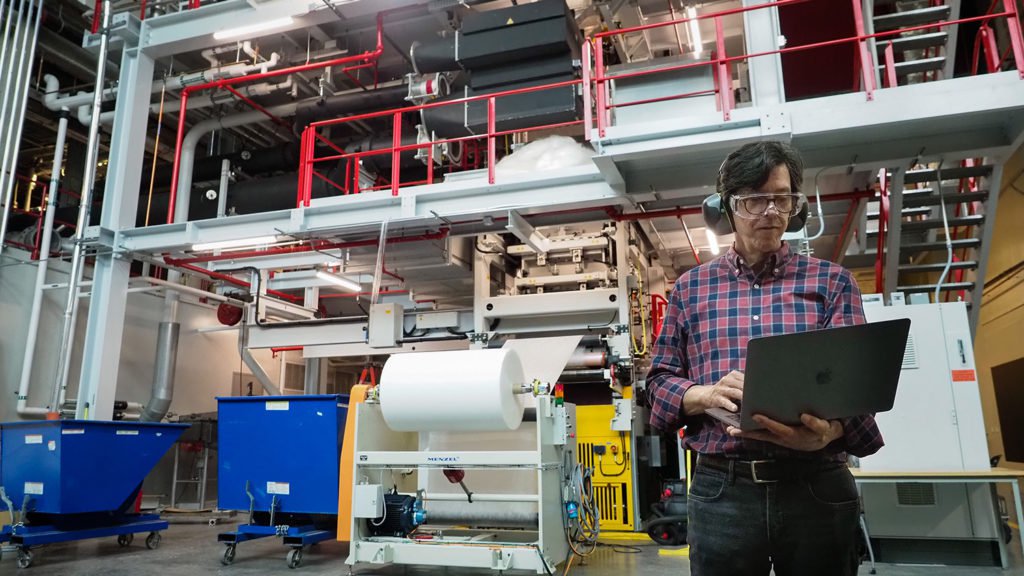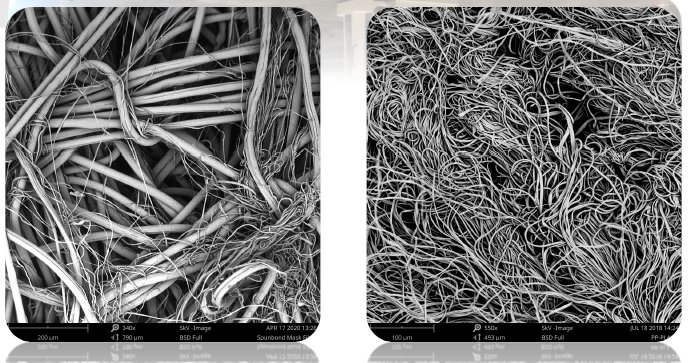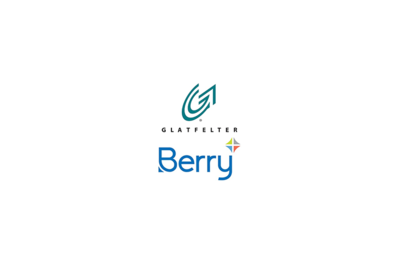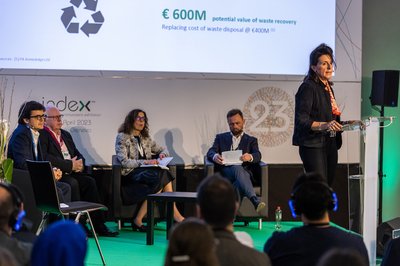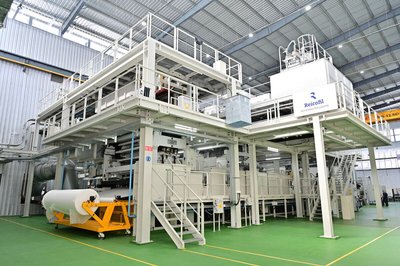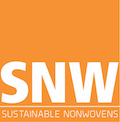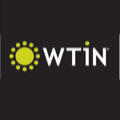
The way the entire nonwovens supply chain has been galvanised at every level by the need for face masks and other PPE articles in 2020 has been well documented. However, one development by the Nonwovens Institute (NWI) at North Carolina State University, with assistance from a number of INDEX™20 exhibitors, may turn out to be more widely significant in the longer term.
A new bicomponent spunbond material that can serve as an effective N95 face mask filter – without the need for a meltblown filtration layer – has been developed by NWI, with partners including ExxonMobil and NatureWorks.
This innovation has already received the 2020 RISE conference Innovation Award from INDA, the North American sister-organisation of EDANA, owners of INDEX™.
Pressing need
The development was in response to the immediate and pressing need for meltblown nonwovens earlier in 2020, when shortages earned them the epithet “the Golden Fleece of Fabrics” and they became the source of sometimes fierce international trade disputes.
NWI executive director Benham Pourdeyhimi explained that the new media development arose from reactivated work on microfibrillation which was initially undertaken for the filter industry.
N95 efficiency can be achieved with just two layers of the new spunbond fabric and there are a number of other benefits. In short, it cuts out the need for a meltblown layer which has been such a huge block in the supply chain for face masks during the pandemic.
The spunbond-only media also requires no electrostatic charging, which has been another bottleneck in the production of face masks this year, and because the materials are strong – unlike classical meltblown materials – they can also be cut and sewn by traditional techniques. Further, they have the potential to be re-used a number of times after cleaning.
Faster processing
In terms of productivity, spunbonding is also much faster than meltblowing. On the latest state-of-the-art Reifenhäuser Reicofil 5 lines, for example, throughput for spunbond fabrics is now up to 270 kg per metre of beam width, compared to 70 kg per metre width for meltblown.
The material can also be based on bicomponents of Ingeo PLA biopolymer and polypropylene and NatureWorks has been an active partner in the development, donating significant amounts of its Ingeo PLA, which improves the productivity of the spunbond process by at least 30%.
“This is a faster and better way to make N95 filter media and not just a new product, but a more efficient process too,” said Robert Green, Vice-President of Performance Polymers at NatureWorks. “Being involved in the development has been exciting.”
Another partner has been ExxonMobil, which has donated polypropylene and Vistamaxx resins.
“We have worked with the Nonwovens Institute for over ten years and this development is a good example of the collaborative projects and teamwork involving companies from across the nonwovens supply chain during the pandemic,” said John Roberts, Strategic Marketing Executive at ExxonMobil. “Collectively the industry has a great deal to be proud of this year.”
Largest in the USA
Companies in North Carolina and beyond benefit significantly from the Nonwovens Institute, which is the largest cooperative research institute in the USA.
As a partnership between industry, government and academia operating on an open innovation platform, the institute engages experts from industry and higher education in building next-generation nonwoven applications, while also providing training and guidance to the field’s future leaders.
The significance of the nonwovens industry to North Carolina is underlined by the expected attendance of the state’s Economic Development Partnership (EDPNC) as an exhibitor at INDEX™20.
